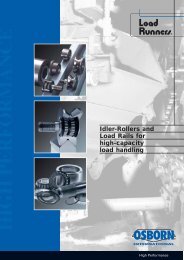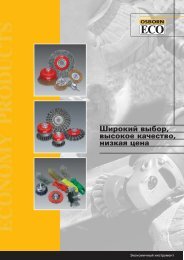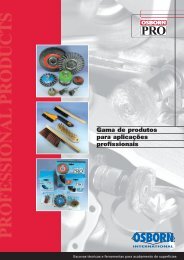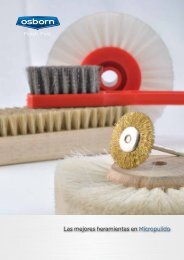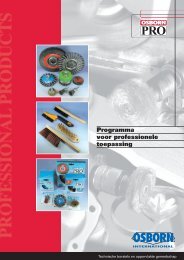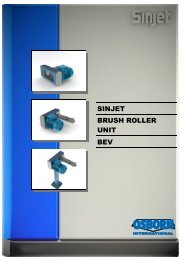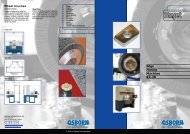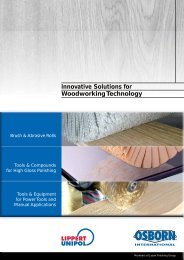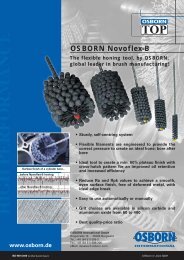Create successful ePaper yourself
Turn your PDF publications into a flip-book with our unique Google optimized e-Paper software.
POLISHING/SATINISING<br />
Introduction & technical information<br />
PERFECT<br />
POLISHING<br />
Maximum 3 steps for perfect high-gloss surfaces:<br />
1. Cutting follows surface grinding and removes<br />
material. For this reason, cutting is not suitable for<br />
soft metals. Working with a sisal cloth ring smoothes<br />
out unevenness, removes striae and scratches, and<br />
prepares rough and uncoated surfaces for polishing.<br />
2. High-quality polishing removes traces of cutting<br />
and further smoothes the surface. The best results<br />
can be achieved using our specially developed<br />
NOTIFLEX® polishing cloth (outstanding results<br />
without unattractive bias stitching where reduced<br />
amounts of compound are used). Numerous high<br />
quality non-fraying cloth polishing buffs with<br />
extended service life are available.<br />
3.Colouring calls for minimal pressure and<br />
short finishing times. Again various polishing<br />
buffs are available.<br />
Which combination for which result?<br />
The following summary will help you find the best<br />
combination of polishing compound and polishing tools<br />
needed for each step in finishing each material.<br />
The short version can be found in the info area for each product.<br />
Key to the materials below.<br />
1 = Sisal cloth<br />
2 = Notiflex (NTF) 914<br />
3 = Notiflex (NTF) 925<br />
4 = Compound, white<br />
5 = Compound, brown<br />
6 =<br />
7 =<br />
8 =<br />
9 =<br />
10 =<br />
Compound, blue<br />
Felt, 2-stage<br />
Cloth 101<br />
Cloth 290<br />
Felt, 3-stage<br />
Polishing as a 3-step process<br />
System using top-quality, patented Notiflex mat without bias stitching. Suitable for all machines, diameters and bores.<br />
3 STEPS<br />
1. Cutting<br />
For removing defects and scratches, belt<br />
sanding > 280 grit or sisal lines.<br />
2. Polishing<br />
Removing traces of cutting and blending the<br />
surface. Important for achieving a flat, highgloss<br />
surface in the next step.<br />
3. Colouring<br />
For high-gloss surfaces.<br />
Steel Stainless steel Brass Copper Aluminium<br />
1 or 10 1 or 10 1 or 10 starting with<br />
4 4 5<br />
step polishing<br />
Steel Stainless steel Brass Copper Aluminium<br />
2 or 10 2 or 10 2 or 10 2 or 10 2 or 10<br />
4 4 5 5 5<br />
Steel Stainless steel Brass Copper Aluminium<br />
3 or 10 3 or 10 3 or 10 3 or 10 3 or 10<br />
6 6 6 6 6<br />
2 STEPS<br />
Polishing as a 2-step process<br />
Suitable for applications where no cutting is needed. Please note: There is a special summary of polishing buffs and compounds<br />
for the 2-step method using a satiniser.<br />
1. Polishing<br />
Level the surface. Important for achieving a<br />
flat, high-gloss surface in the next step.<br />
For high-gloss surfaces.<br />
Steel Stainless steel Aluminium Brass Copper<br />
7 7 7 7 7<br />
4 4 5 5 5<br />
Steel Stainless steel Aluminium Brass Copper<br />
2. Colouring 8 8 8 8 8<br />
6 6 6 6 6<br />
1 STEP<br />
Polishing as a 1-step process<br />
Steel Stainless steel Aluminium Brass Copper<br />
1. Polishing and Finishing 9 9 9 9 9<br />
For low-gloss effects (not high gloss)<br />
4 4 5 5 5



